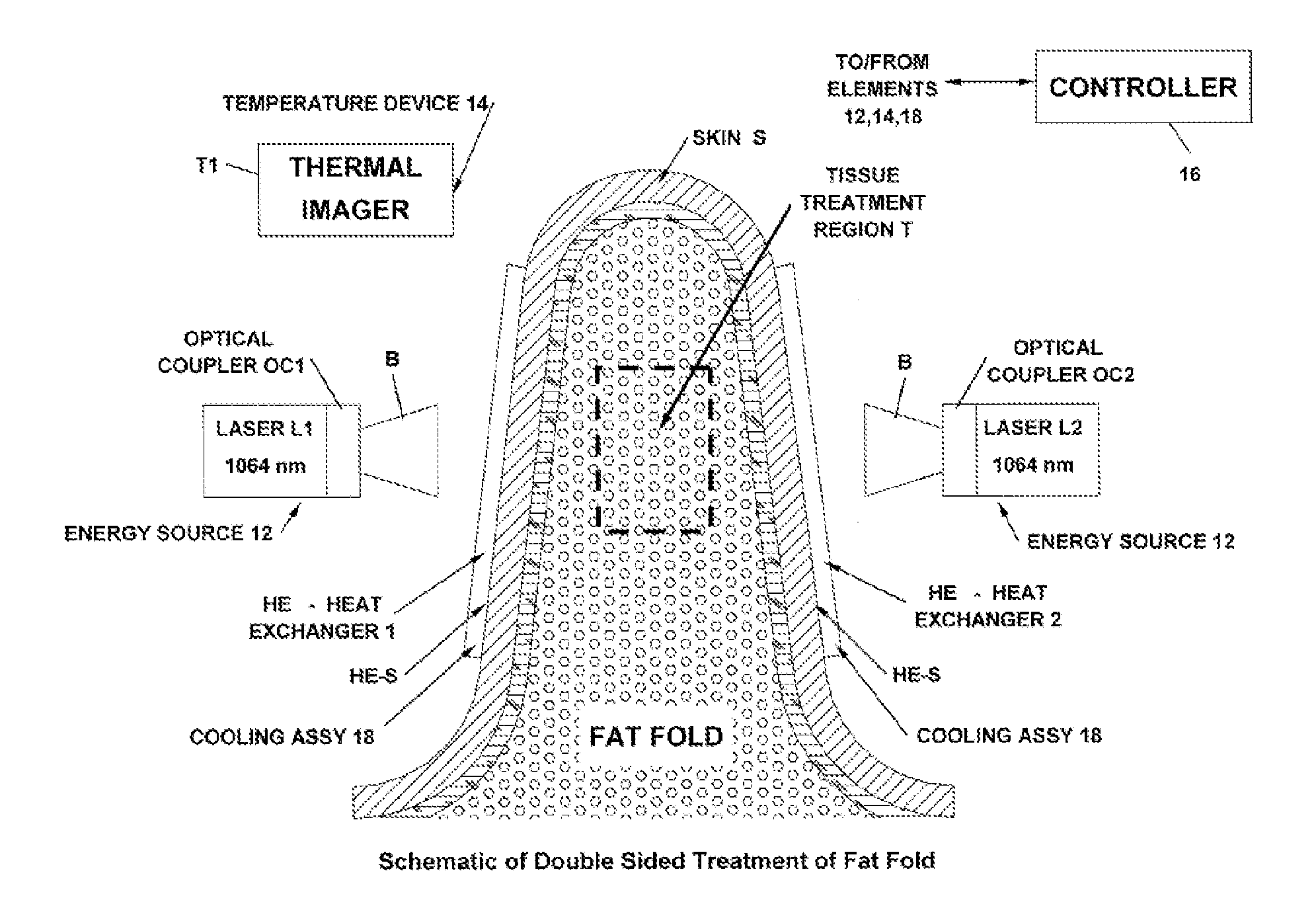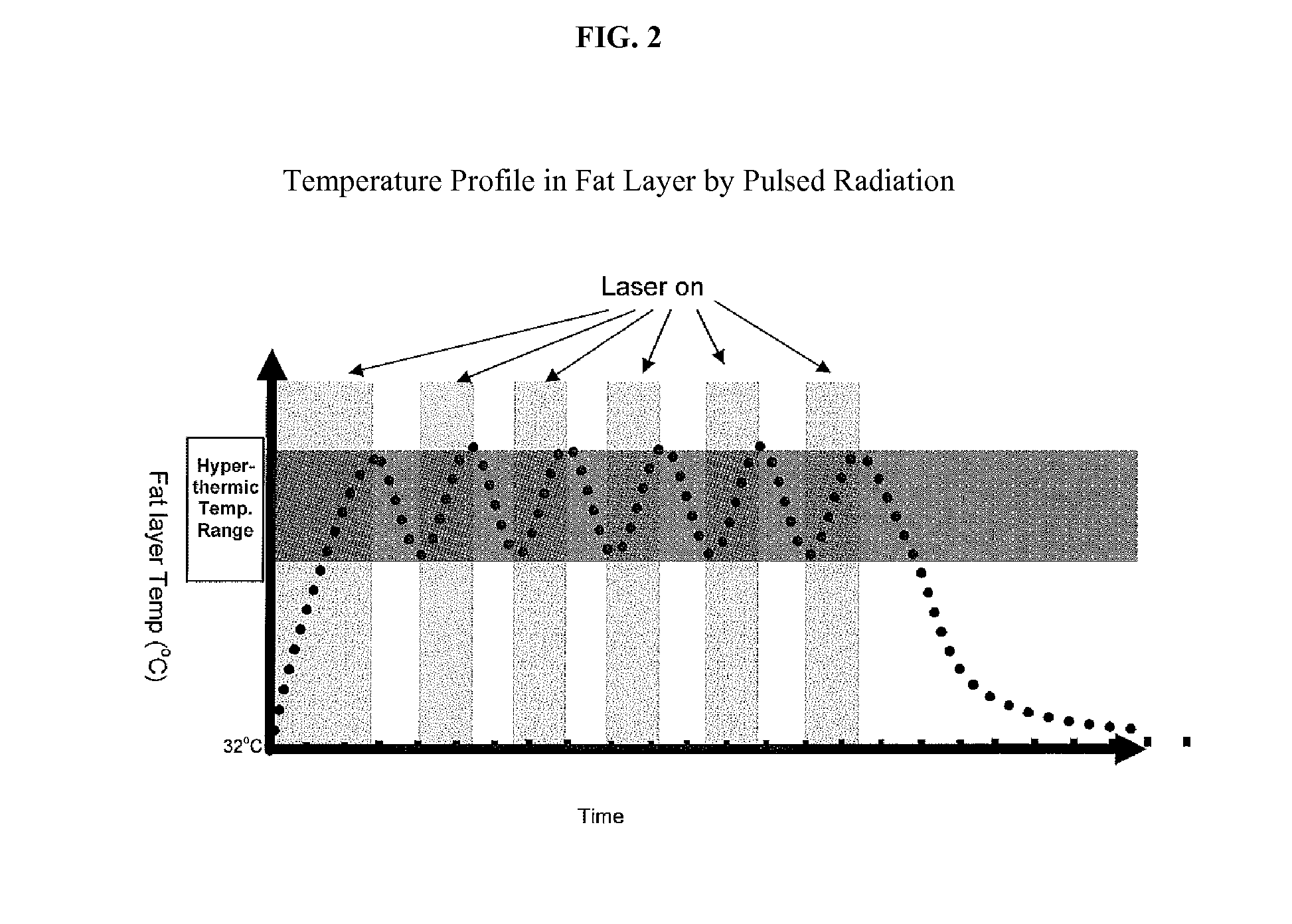Non-Invasive Fat Reduction by Hyperthermic Treatment
- Summary
- Abstract
- Description
- Claims
- Application Information
AI Technical Summary
Benefits of technology
Problems solved by technology
Method used
Image
Examples
Embodiment Construction
[0015]At the sub-cellular level, many studies have shown that the plasma membrane (containing both protein and lipid) is sensitive to external heat, and as such has been the primary target of heat-based cellular disruptive treatments. Besides the cell's plasma membrane, some other systems / organelles having similar lipid bilayer morphologies (including constitutive systems, mitochondria, ribosomes, the Golgi apparatus, lysosome, centrosome, and the endoplasmic reticulum) as well as the cytoskeleton and structural proteins are possible targets to cause cell injury and disruption. Usually, supraphysiological thermal insult is a complex matter with thermal morphological and functional alterations of multiple organelles, and always has a pleotropic (i.e., multi-target) effect on cells.
[0016]Because the lipid bilayer components of the adipocyte cell membranes are held together only by forces of hydratation, the lipid bilayer is the most vulnerable to heat damage. Even at temperatures of o...
PUM
 Login to View More
Login to View More Abstract
Description
Claims
Application Information
 Login to View More
Login to View More - R&D
- Intellectual Property
- Life Sciences
- Materials
- Tech Scout
- Unparalleled Data Quality
- Higher Quality Content
- 60% Fewer Hallucinations
Browse by: Latest US Patents, China's latest patents, Technical Efficacy Thesaurus, Application Domain, Technology Topic, Popular Technical Reports.
© 2025 PatSnap. All rights reserved.Legal|Privacy policy|Modern Slavery Act Transparency Statement|Sitemap|About US| Contact US: help@patsnap.com



